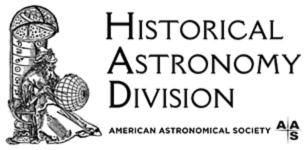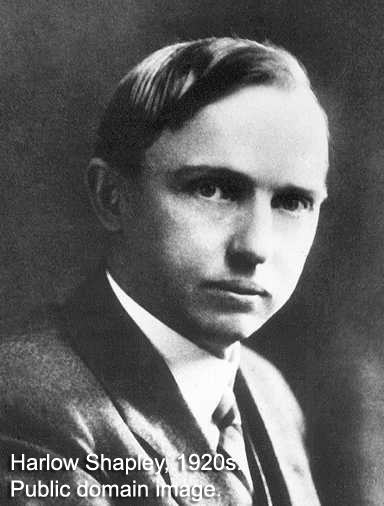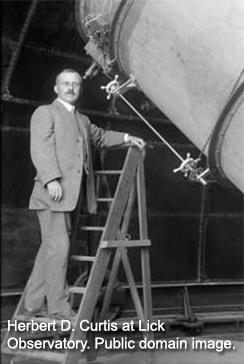This Month in Astronomical History: Great Debate on the Nature of the Universe
Teresa Wilson United States Naval Observatory
 Each month as part of this new series from the Historical Astronomy Division of the AAS, an important discovery or memorable event in the history of astronomy will be highlighted. This month, we look at a 1920s debate about the nature of the universe.
Each month as part of this new series from the Historical Astronomy Division of the AAS, an important discovery or memorable event in the history of astronomy will be highlighted. This month, we look at a 1920s debate about the nature of the universe.
Discussion of ideas in the form of debates has been popular since the days of the Lyceum, and philosophers are not the only ones trying to understand the nature of the universe and humanity’s place within it. By the turn of the 20th century, our understanding of the universe had evolved with the revolutionary ideas and observations of astronomers like Copernicus, Kepler, and Galileo. With the advent of new, larger telescopes, it was about to be transformed again. The debate over the nature and size of the universe came to a head in 1920 during the meeting of the National Academy of the Sciences at the Smithsonian’s Museum of Natural History. Harlow Shapley (Mount Wilson Observatory) and Herber D. Curtis (Lick Observatory) presented their findings. Although their presentations focused on the nature of spiral nebulae and the scale of the universe, the astronomers disagreed on as many as 14 issues.
 The so-called "Great Debate" was not a traditional debate. Rather than exchange their ideas with rebuttals during the event, the astronomers shared their viewpoints beforehand. Then, each gave a single talk that would include responses to the other’s arguments.
The so-called "Great Debate" was not a traditional debate. Rather than exchange their ideas with rebuttals during the event, the astronomers shared their viewpoints beforehand. Then, each gave a single talk that would include responses to the other’s arguments.
Shapley, a young, ambitious astronomer whose research focused on the nature of globular clusters, spoke first. Based on the widely-accepted observation that globular clusters were more concentrated in one half of the sky, he hypothesized that this section of the sky housed the galactic center. He applied a crudely determined period-luminosity relation for Cepheid variable stars to determine the distances to these clusters, which together revealed the distance of our sun from the galactic center. Shapley’s results increased the current estimation for the size of the universe from around 10 kiloparsecs (kpc; ~33,000 lightyears) to 100 kpc (~326,000 ly) and moved the sun from the center of the galaxy to a spot 20 kpc (~65,000 ly) away. However, Shapley still asserted that the entire universe was contained within the Milky Way.
 Up next was Curtis, an established, well-respected astronomer. He maintained the traditional opinion that the Milky Way was only 10 kpc in diameter with our sun very close to the galactic center. He declared that spiral nebulae were, in fact, galaxies themselves. After all, he pointed out, novae in the Milky Way are far brighter than those seen in spiral nebulae. Because he did not believe that Cepheid variable stars were good distance indicators, Curtis also took issue with Shapley’s new size for the galaxy. Consequently, he disagreed with all of Shapley’s new distances.
Up next was Curtis, an established, well-respected astronomer. He maintained the traditional opinion that the Milky Way was only 10 kpc in diameter with our sun very close to the galactic center. He declared that spiral nebulae were, in fact, galaxies themselves. After all, he pointed out, novae in the Milky Way are far brighter than those seen in spiral nebulae. Because he did not believe that Cepheid variable stars were good distance indicators, Curtis also took issue with Shapley’s new size for the galaxy. Consequently, he disagreed with all of Shapley’s new distances.
In the 1920s, Edwin Hubble found Cepheid variable stars in the Andromeda nebula, and determined that that system, and other spiral nebulae, indeed lie outside the Milky Way, enlarging the scale of the known universe. In the 1930s, Robert J. Trumpler definitively proved the existence of interstellar absorption. Together with a better understanding of the distances and distribution of globular clusters, it verified that the sun was not near the galactic center.
Curtis was correct about the nature of spiral nebulae, or galaxies; Shapley was correct that Cepheid variables could be used to determine distances, and that the sun is not at the center of the galaxy. Curtis was right for the wrong reasons and Shapley was wrong for the right reasons; ultimately, the nature of the universe remains open to debate today.
Further Reading
Shapley, H, and H Curtis. 1921. "The Scale of The Universe". Bulletin of the National Research Council 2.11: 171-218.
Trimble, V. 1995. “The 1920 Shapley-Curtis Discussion: Background, Issues, and Aftermath”. Publications of the Astronomical Society of the Pacific. 107: 1133
Hoskin, M. A. 1976. “The ‘Great Debate’: What Really Happened”. Journal for the History of Astronomy. 7: 169
Smith, R. W. 1982. The Expanding Universe, Astronomy’s ‘Great Debate’ 1900-1931, (Cambridge University Press, Cambridge)
Each month is an exciting new adventure into the archives of astronomical history, but before I continue any further, I would appreciate your feedback to ensure my writing is reaching the largest audience possible. Please participate in a brief questionnaire (approximately 10 minutes) about the style and content. You may also submit any suggestions for future topics. Thank you!

